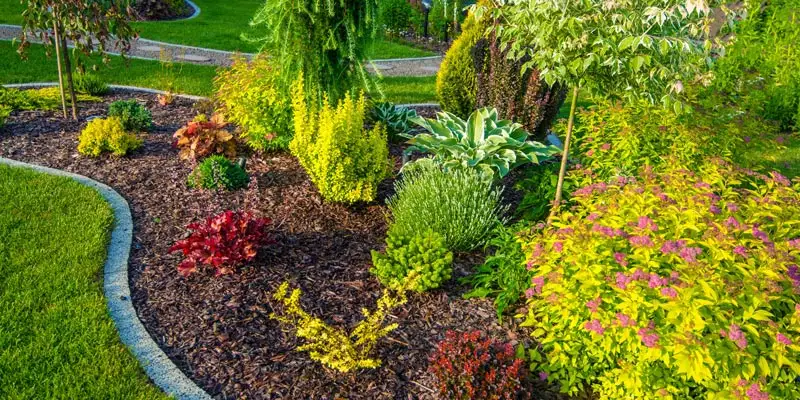Landscape Design Things To Know Before You Buy
Rumored Buzz on Landscape Design
Table of ContentsThe 9-Minute Rule for Landscape DesignUnknown Facts About Landscape DesignThe 30-Second Trick For Landscape DesignNot known Incorrect Statements About Landscape Design
Official style motif. Credit Rating: Gail Hansen, UF/IFAS The yard is an extension of the home where a variety of activities happen. A lawn can generally be split right into three areas: public (the front lawn), exclusive (the backyard), and solution (typically the side lawn). The location of activity areas depends largely on the kind of location, the size of area needed, the type of task, and the preferred distance to various other activities and structures (Landscape Design).
The outside wall of your home usually works as the first wall or beginning factor of an exterior space. Incompatible usages ought to be separated, and related tasks, such as cooking and dining, need to be created to make the lawn much more effective and satisfying. When utilizing hardscape to develop spaces, use building and construction material comparable to that used in the residence for connection from your home right into the yard.
Connected rooms. Credit Rating: Gail Hansen, UF/IFAS Using similar hardscape features and repeating plants pulls the eye around the garden. Essential factors along the method can be stressed with growings or features that attract focus and urge motion in a specific instructions. Moving along the course takes an individual from one area to the following and permits the customer to have a range of experiences.
From a layout point of view, plant products have three major functions in the landscape: visual, structural and practical. Aesthetically, plants develop an aesthetically pleasurable setting and structurally plants organize and define spaces.
Our Landscape Design Statements
For mental convenience plants are used as physical or implied obstacles for personal privacy and safety and security. Physical obstacles block both the view and accessibility to a space and include fencings, walls and plant hedges. Landscape Design. Suggested barriers, typically low growing plants, obstruct gain access to but not the sight (Figure 9). Other functions of plants include cleaning up the air, stopping erosion and soil loss, retaining wetness in the soil, and returning raw material to the dirt.
Physical and indicated barriers. Credit Report: Gail Hansen, UF/IFAS For these factors, the kinds of plants to be made use of (such as trees, shrubs, or groundcovers) need to be chosen in the beginning of planning. Plant types are selected for their useful capacities so that their future function and called for area can be considered at the very same time.
The above airplane, the upright plane and the ground plane ought to all be thought about to create room. As soon as the shape of a plant bed has actually been established, the plants ought to be massed (organized) and layered to achieve visual unity and the preferred quantity of room. The dimension of a plant mass will certainly rely on the complete dimension of the yard, the dimension of the specific plants in the mass, and the focus or effect wanted from the plant material.
Each plant mass is in front of, behind, or following to, his explanation one more mass. Figure 11. Horizontal plant layers. Debt: Gail Hansen, UF/IFAS Number 12. Upright plant layers. Credit Score: Gail Hansen, UF/IFAS Duplicating plants within a mass and duplicating masses with comparable plants ties the garden with each other. The private plant features need to be considered to effectively layer and mass plants.
The Basic Principles Of Landscape Design
All plant structures begin with the primary structure plants, the huge, mostly evergreen history plants-such as the trees and huge hedges. These plants separate or enframe rooms, manage the size of the space, and provide the starting point for choosing the proper qualities of the 2nd layer, midground plants, for massing and infill.
Vital points in the yard must be highlighted by the use of distinct plants, unique frameworks, or yard ornaments. Marking limits or entrances to rooms can be performed with gates, arbors, and steps, or through the use of special and vivid plants. The form and/or style theme of the yard will commonly assist identify the crucial points and how they should be highlighted.
Various other vital places in the lawn are centerpieces, which is made use of to aesthetically arrange a designed area. The type of centerpiece typically depends on the seeing point of view. Various perspectives or viewpoints can reveal different make-ups in the landscape that may call for a range of focal points. Contrasting structure, shape, dimension and color will capture and hold the eye.
Indicators on Landscape Design You Need To Know
Plant kinds. Credit History: Gail Hansen, UF/IFAS After form, appearance is the following leading attribute of a plant; rugged, medium and fine textures can my blog be used for contrast and focus in the landscape.


The enjoyable scent of plants, the noise of wind in the trees, the noise and texture of water, and the colors and appearances of sculptures, pots and garden furnishings all include in the experience of the yard. One information that is commonly neglected is the result of light on the appearances of the plants.
The whole garden changes in function and look throughout the day, and the course of a year, as the light and temperature level adjustment from early morning to evening and link period to period. Plant selection have to think about a plant's growth price, its mature size and form, and the maintenance it will certainly require.
It is essential to recognize the eventual fully grown dimension of plants so they can be positioned in the right area and spaced properly when they are mounted. Offering plants space to expand is a difficulty because the typical fully grown dimension is generally based upon ideal growing problems and the ecological conditions of a site might create a plant to enlarge or remain smaller.